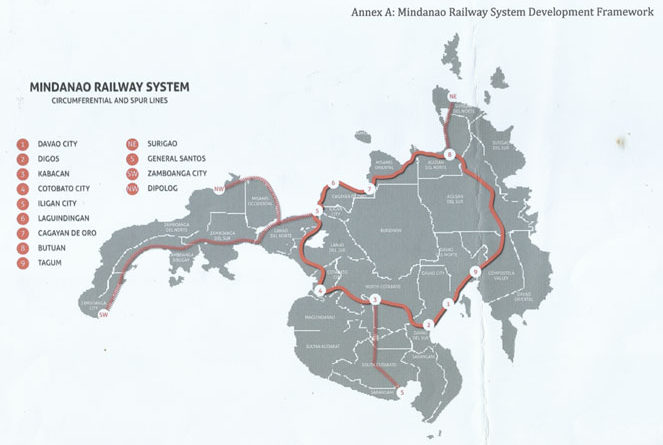Mindanao Railway project specs altered to hurry implementation
By Denise Valdez
 THE Department of Transportation (DoTr) said costs were adjusted upward for the Mindanao Railway Project Phase 1 due to the need to traverse rolling terrain, while the rail line was downgraded to single track and non-electric to speed up implementation.
THE Department of Transportation (DoTr) said costs were adjusted upward for the Mindanao Railway Project Phase 1 due to the need to traverse rolling terrain, while the rail line was downgraded to single track and non-electric to speed up implementation.
Transportation Undersecretary for Railways Timothy John R. Batan told reporters Tuesday that the approved project cost more than doubled to P82.9 billion from P35.9 billion previously because earlier studies had assumed that the rail line would cross flat terrain.
“Feasibility study from 2015 to 2017 assumed (the route to be) flat. But if you look at the alignment of Tagum-Davao-Digos, it’s not flat, it’s rolling… we need some infrastructure adjustments, some civil works adjustments such as elevated viaducts and deep cuts, which is the primary driver of our increase in cost,” he said.
A National Economic and Development Authority (NEDA) subcommittee approved the increased cost estimate last week.
“Ang configuration natin ngayon [Our configuration now]… is single track, non-electrified. The reason why the interagency ICC (Investment Coordination Committee) decided [to do that] is to optimize the investment,” he added.
The NEDA ICC Cabinet Committee said Monday it approved the increased budget for the China-funded Tagum-Davao-Digos segment of the Mindanao Railway Project to cover changes in its structural and construction works and the inclusion of a Davao Satellite Depot.
Transportation Secretary Arthur P. Tugade said the downgrade in the railway’s configuration was meant to get the project rolling.
“[G]usto ko double track hindi single track. Gusto ko electrified, hindi diesel. Ngayon sabi nila, para maumpisahan na ‘yan, ‘yung engineering design, baguhin natin. Gawin nating single track, diesel,.. (pero) sa umpisa lang ‘yan [I wanted it to be double track and electrified. But they said to start the project, the engineering design must be changed to single track, diesel. But that’s just for now],” he said.
“Tandaan mo, by phases ‘yan. Pwede naman ‘yan baguhin in the future. Para maumpisahan na lang [Remember, that project would come in phases. That could still be changed in the future. This is only to get the project started],” he added.
With the approval from NEDA, the DoTr now hopes to sign the loan agreement for the Tagum-Davao-Digos segment with the government of China within the first half of next year. Construction is also eyed to begin in parallel with the loan signing.
“First, second quarter, matagal na ‘yun [at the latest]… We’re planning to get a commitment from the Chinese government, para ‘pag na-award natin ‘yung kontrata within this year, in parallel with the negotiations for the Chinese loan agreement, nagtatrabaho na sila [that when we award the contract this year, they’ll start working in parallel with the negotiations for the loan agreement],” Mr. Batan said.
“With the decision of the ICC last week, we are already sending this week our request for the shortlist,” he added, referring to the shortlist of contractors that China will provide to the Philippines as the recipient of the ODA. The DoTr will choose from the shortlist, through a limited competitive bid, the Chinese contractor to undertake the project.
“The commitment of China to finance the project has not changed from the time that they made that commitment in 2018.”
Mr. Batan said based on the general terms, China is expected to finance up to 80-85% of the Tagum-Davao-Digos railway’s total project cost.
Source: Business World

